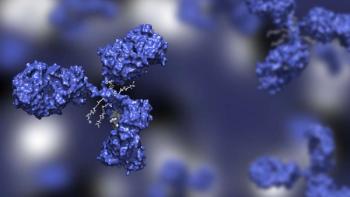
The Use of 2D-NMR for the Assessment of Biosimilarity
Researchers describe a new method to compare the higher-order structure of a reference biologic with its proposed biosimilar product candidates.
To determine the higher-order structure of CT-P13, a biosimilar to Remicade (infliximab) that is under consideration by FDA, biologics manufacturer Celltrion used six different analytical techniques: far and near UV circular dichroism, Fourier transform infrared spectroscopy (FTIR), free thiols, antibody array, liquid chromatography coupled with mass spectrometry (LC–MS)(disulfide bond characterization), and differential scanning calorimetry. Methods like FTIR and Raman spectroscopy are low-resolution options, according to a new correspondence published in Nature Biotechnology, and a new method called two-dimensional nuclear magnetic resonance spectroscopy (2D-NMR) is now available to characterize structural differences.
In an experiment comparing the reference product Neupogen (filgrastim) with three unapproved, non-US-sourced biosimilars for filgrastim, investigators were able to conclude that 2D-NMR facilitated visual comparison of the spectral patterns of the products and allowed the researchers to directly assess sample similarity.
Differences in temperature in separate spectrometers caused changes in spectral arrays, demonstrating the importance of proper instrument calibration. Once the spectrometers were adjusted, the discrepancies in spectral patterns disappeared. This observation caused investigators to stress the importance of “matched experimental conditions if the method is to be used as a structure comparability tool.” Other than the issue with temperature, investigators said the data they acquired with 2D-NMR showed “minimal measurement drift.”
Although the researchers saw the value in this new analytical tool, they warned that only a small number of samples would be suitable for characterization by 2D-NMR. The technique should not be used to compare similarity for the monitoring of lot-to-lot consistency in large batches, they said, and they suggested that in studies across large numbers of samples, multivariate statistical analysis would still likely be the most suitable option.
Importantly, the researchers reported that on all but one of the spectrometers, all of the drug products that were reviewed had highly similar higher-order structures. “The results clearly demonstrate both the precision and the robustness of 2D-NMR as a multifrequency-based higher-order structure assessment tool,” the authors wrote. “To our knowledge, this is the first reported interlaboratory study of a high-resolution 2D-NMR method to assess biotherapeutic higher-order structure.”
Source:
Newsletter
Stay at the forefront of biopharmaceutical innovation—subscribe to BioPharm International for expert insights on drug development, manufacturing, compliance, and more.





